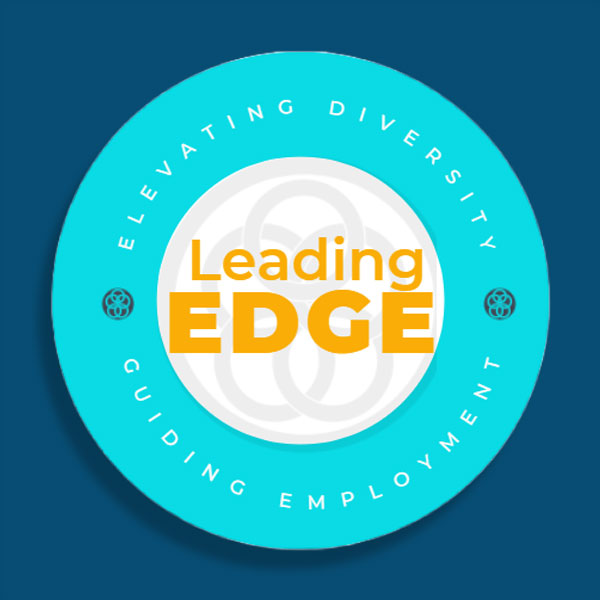5 Takeaways for the Future of AI in Nonprofit Marketing: A Discussion with 70 Leading Agencies and Nonprofit Consultants
Technology has posed significant challenges and opportunities for nonprofits before, sparking innovation and change for direct-response fundraisers. Today, we stand at a similar crossroads with the emergence of generative AI. Recently The Nonprofit Alliance’s (TNPA) Direct Response Fundraising Counsel (ADRFCO) convened a roundtable discussion at the Nonprofit Fundraisers Symposium (presented by DMAW and TNPA), inviting the agency and partner perspectives on navigating AI. I’m grateful to have had the opportunity to facilitate the discussion.

The attendees shared a tremendous wealth of knowledge, so I wanted to share my five key takeaways that offer a glimpse into the future of AI in nonprofit marketing and beyond.
1. Knowledge Sharing Will Drive Impactful Training and Use Policies
Concerns around plagiarism, creative decline, and bias highlight the need for thoughtful use policies. This AI use framework helped inform ABD Direct’s and can be a helpful example of how organizations can employ a human-in-the-loop model that ensures thoughtful prompts and an intentional review of outputs with total user accountability. This approach acts as a check against the trust placed in entities like OpenAI and mitigates potential risks.
But no matter how good your use policy is, the success of its implementation will be determined by follow-up. Use policies are only as good as the training that follows them. The Orr Group has published a prompt training that offers a helpful starting point for organizations looking for a place to start in designing their training.
An industry-wide lens can also be useful when considering a responsible path forward for AI use. Fundraising.AI’s framework and collaboration with leading tech companies paves the path toward an industry-wide commitment to responsible AI use and open channels for communication with the AI platforms that are making many of the game’s rules. These steps toward shared knowledge and best practices are pivotal in guiding the nonprofit sector toward ethical AI implementation for the causes we care about.
2. AI Offers the Best Chance for True 1-1 Communication
Generative AI’s ability to generate a vast array of content, combined with other long-established machine learning techniques that predict what precise audience cohorts will respond to, introduces us to a new era of personalized communication. Accessible Intelligence is one example of a company combining the potential of these two distinct applications of AI. However, marketers who want to use AI to develop more customized content are not limited to proprietary solutions.
Custom GPTs offer the powerful potential to amplify and vary top-performing content. Custom GPTs are unique chatbot instances that ChatGPT users can train on specific data sets. Custom GPTs trained on high-performing content can produce multiple variations that maintain the original’s successful elements. Alternatively, these GPTs could be trained on an organization’s policy positions. These one-to-some content development solutions are just opportunities available to us at the beginning of an exponential innovation curve. Scaleable 1-1 content development may not be ready yet, but it’s clear that AI is paving the way for us to consider what was once unattainable.
3. Data Privacy Concerns Remain Despite Tech Company Efforts
Despite steps from OpenAI to improve protections for business users, data privacy remains a concern for nonprofit marketers. This comes as no surprise, given the initial rollout of ChatGPT with zero privacy protections and the anxieties that developed around it. Our roundtable discussion shed light on significant progress on this issue, highlighting the development of solutions such as ChatGPT Team. This pricing model from OpenAI released in January 2024 claims not to use prompt inputs for training the OpenAI model and to meet SOC 2, SOC 3, GDPR, and CCPA compliance standards, representing a significant step towards bolstering user confidence. Since tech companies are now telling us they’re offering the protections many nonprofit marketers want, it’s up to us whether to extend our trust. This is a closely held decision that belongs to every nonprofit, but we found insights offered by AI Impact Lab that draw parallels between the trustworthiness of ChatGPT Team and well-established platforms like Canva and Asana to be a helpful resource as organizations evaluate their risk calculus.
Even for those extending trust to tech companies, use policies that strictly limit the sharing of personally identifiable information (PII) in prompts are being adopted by many nonprofits and nonprofit partners. This approach can balance the trust placed in companies like OpenAI with precautions that limit damage if that trust is breached.
4. AI’s Democratizing Potential in Data Science
Even amidst early challenges that include hallucinations and inaccuracies in AI-generated insights, AI’s foray into data analysis brings the promise of democratizing data science. These challenges underscore the necessity for expert oversight, yet they also highlight the transformative potential of AI in making data science accessible to a broader audience. Some companies are already developing locally-trained LLMs that empower individuals to more easily analyze their own data through AI. These tools can significantly lower the barriers to gaining value from data analysis.
But back to those hallucinations: Jessica Thomas’ series of posts on LinkedIn (you can find the first here) exploring these capabilities further illuminates the balance between the vast potential and the challenges of AI in data analysis. This emerging landscape suggests a pivotal role for data scientists in guiding AI’s integration into data analysis, ensuring that its application enhances rather than complicates decision-making processes. Through such intentional efforts, AI has the power to make data-informed decision-making more accessible to all.
5. The Nonprofit Sector’s Leadership in Embracing AI
We are on the brink of a new era. Machine learning has already significantly altered fundraising strategies. Direct mail and email co-ops have revolutionized donor engagement through predictive modeling, leveraging behavior analysis and engagement data to refine donor acquisition.
We think it’s interesting to recall the arrival of digital marketing as we put the AI surge into perspective. This moment presents similar challenges and opportunities—questions of investment, skill enhancement, and risk management loom large. Yet, the resilience and adaptability demonstrated by early adopters in the digital realm offer invaluable lessons for navigating the AI landscape. The nonprofit sector’s capacity to embrace technological shifts promises a pathway to using AI in a way that can truly make a meaningful impact on mission.
The impact extends beyond the causes we work for to the people we work with. A Harvard Business Review study underscores the potential awaiting us: they found knowledge workers who have experienced significant efficiency gains through AI integration—delivering 12.2% more tasks with up to 40% higher quality results. This look into AI’s capability to boost creativity and productivity foreshadows the profound impact embracing AI could have across sectors—dare we say, with the potential even to address the widespread burnout reported by knowledge workers.
As today’s leaders and organizations venture into this new frontier, the journey ahead will necessitate curiosity, cautious optimism, and a commitment to ethical practices. Drawing inspiration from our past successes and the resilience demonstrated by the nonprofit sector, we are well-equipped to navigate the challenges and opportunities AI presents.



